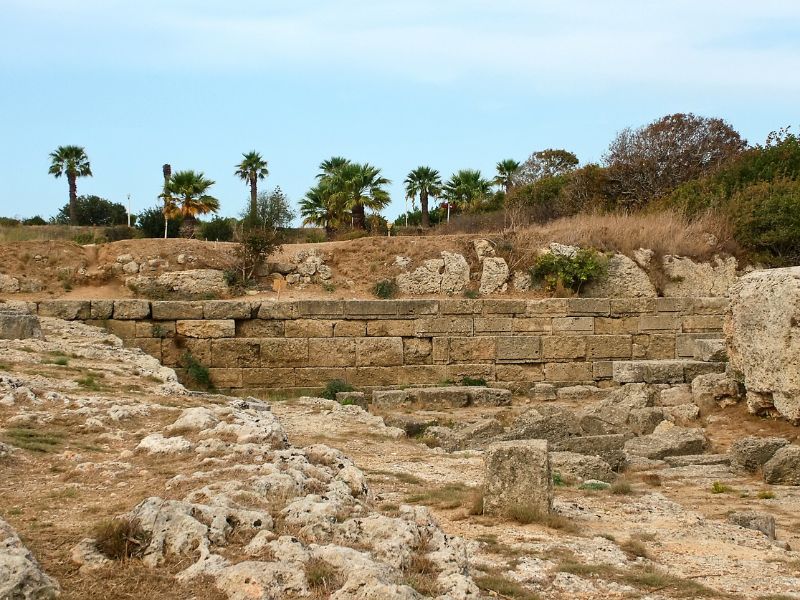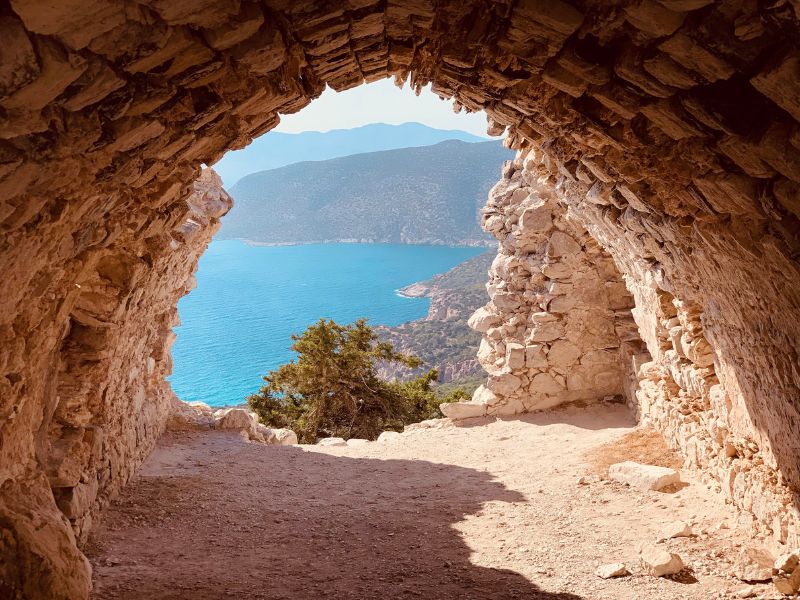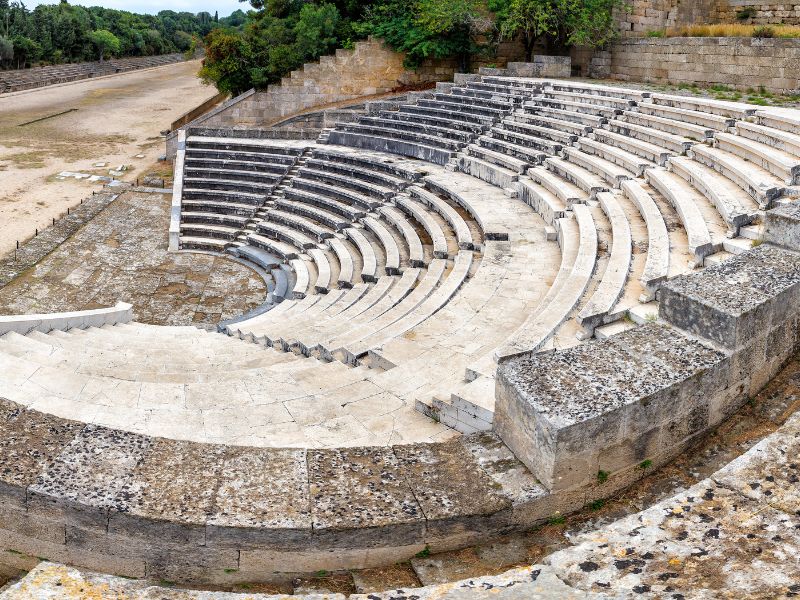
Worship of Apollo in Rhodes: Light, Order, and Prophecy
May 8, 2025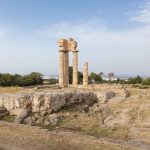
The Halieia Festival of Rhodes: Where Sport Met the Sacred
May 16, 2025Table of Contents
Where Stone Meets the Sacred
High above the modern city, the ancient sanctuaries of Rhodes once formed a constellation of devotion. This wasn’t a fortress of walls but a sanctuary of thought — a place where gods, humans, and nature coexisted beneath the same light. The Acropolis of Rhodes embodied more than architecture; it was a dialogue between matter and spirit.
Here, sunlight meant revelation. The temples of Apollo and Artemis, together with the hidden cave of the Nymphs, created a rhythm of sacred spaces, each reflecting a different face of the divine. Geometry and intuition, marble and moss, law and instinct — all found their balance on this hill of harmony.
The Spiritual Landscape of the Acropolis

The ancient sanctuaries of Rhodes were not scattered at random. They formed a deliberate spiritual topography across Monte Smith, where the terraces stepped gently toward the sea. From above, one could see the harbours spread like open palms, uniting earth, sky, and water in one sweeping view.
At the summit, Apollo ruled — god of light and intellect. Yet near his grand temple stood humbler shrines: Artemis’s quiet precinct and the cave of the Nymphs, guardians of springs and fertility. Together they created a conversation between reason and instinct, between the measured and the mysterious. The Rhodians seemed to know that faith does not live in marble alone.
The Temple of Apollo Pythios – The Divine Summit
At the Acropolis crown rose the Doric Temple of Apollo Pythios, the brightest of the ancient sanctuaries of Rhodes. Built in the 3rd century BC, it caught the sunrise directly on its façade — an architectural hymn to illumination itself.
Carved from local limestone and set on a three-step base, the temple was both civic and sacred. Here Apollo was honoured not only as Pythios, the god of prophecy, but as Polieus, protector of civic virtue. The stairway leading upward echoed the soul’s ascent: from dust to reason, from shadow to light. Even in ruin, its geometry feels alive — proof that for the Rhodians, beauty was an act of worship.
The Temple of Artemis – The Hidden Sanctuary of the Huntress
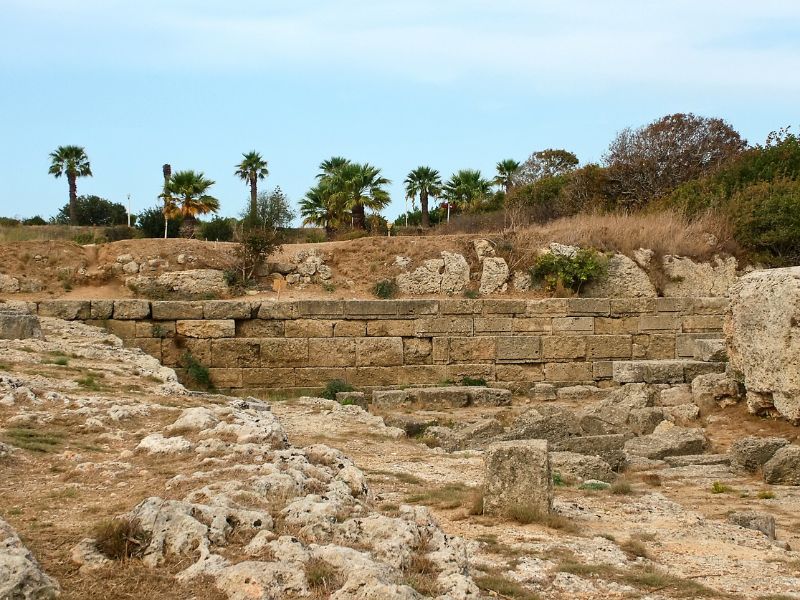
Not far away, half-hidden among shrubs and stones, stood a smaller temple thought to honour Artemis, goddess of the hunt and the moon. Modest in scale, serene in design, it represented another side of Rhodian piety — one turned toward nature and the quiet cycles of life.
The structure likely followed the Doric order: a simple peristyle, a shallow inner cella, and the same east–west alignment that welcomed dawn. Here women might have prayed for safe childbirth, hunters for luck, and travellers for protection. Artemis’s sanctuary was less about spectacle, more about silence — a place where freedom and purity met. In the balance between her wildness and Apollo’s order lay the island’s spiritual equilibrium.
The Cavern Sanctuary – Realm of the Nymphs
Lower on the hillside, half-veiled by rock and ivy, lies the most ancient of all: the cavern of the Nymphs. Unlike the sculpted temples above, this shrine grew out of the land itself. Its dripping walls and echoing hollows made it a natural altar to the unseen powers of water and fertility.
Here worshippers brought simple offerings — oil lamps, clay figures, small cups of water. The flames flickered against the stone, and in that trembling light people felt the pulse of something older than civilization. Before columns and pediments, there was this: earth, darkness, and gratitude.
Harmony Between Nature and Worship

Seen together, the ancient sanctuaries of Rhodes reveal a truth the Rhodians understood well: divinity thrives where balance exists. Apollo’s sunlit temple spoke to intellect; Artemis’s calm precinct to instinct; the Nymphs’ grotto to life’s hidden roots.
Nothing here defied nature — everything conversed with it. The builders followed the contours of the hill, allowing stone, wind, and light to complete their design. Even the limestone came from nearby quarries, carrying the island’s essence into every column. Walking these paths today, one feels that conversation still — between form and feeling, sky and soil, silence and song.
Where Spirit Still Breathes
The ancient sanctuaries of Rhodes remain silent only in sound. In truth, they still speak — of proportion, reverence, and the unity of all things. From the radiant order of Apollo’s summit to the intimate mystery of the Nymphs’ cave, each sanctuary holds a fragment of the same idea: that the divine is both above and within.
Light glinting on stone, water murmuring in the grotto, wind tracing the terraces — these are the voices of Rhodes’s old gods. The people who built here didn’t try to conquer nature; they listened to it. And if you stand on Monte Smith at sunset, watching the city fade into gold, you might hear it too — that quiet harmony where stone and spirit meet.
